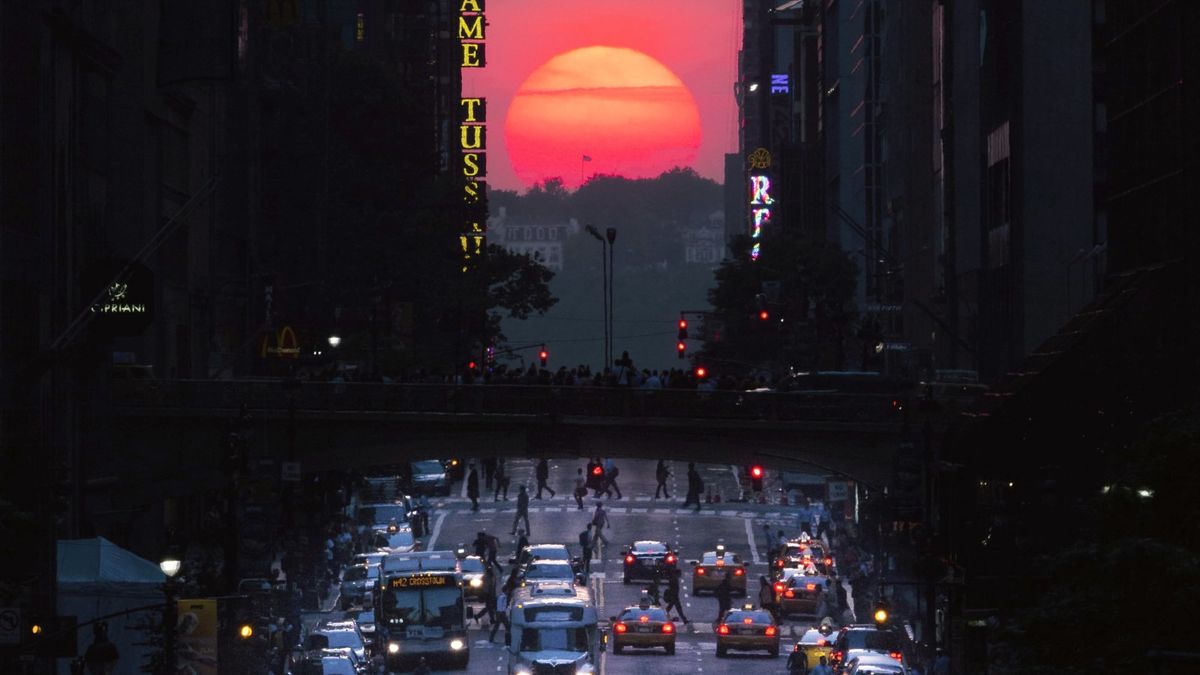Why ‘Manhattanhenge’ is a uniquely New York experience
Think of it as a modern Stonehenge where the monuments are skyscrapers of concrete and steel.

New Yorkers are being treated to some novel sunsets this week, at the tail end of an annual phenomenon known as ‘Manhattanhenge’ when the setting sun aligns with the city’s street grid and bathes the urban canyons in a rosy glow.
Astrophysicist Neil deGrasse Tyson coined the term in a 1997 article in the magazine Natural History.
Tyson, the director of the Hayden Planetarium at New York’s American Museum of Natural History, has said that he was inspired by a visit to Stonehenge as a teenager.
The future host of TV shows like PBS’ Nova ScienceNow was part of an expedition led by Gerald Hawkins, the scientist who first theorized that Stonehenge's mysterious megaliths were an ancient astronomical observatory.
It struck Tyson, a native New Yorker, that the setting sun framed by Manhattan's highrises could be compared to the sun's rays striking the center of the Stonehenge circle on the solstice.
Unlike the Neolithic Stonehenge builders, the planners who laid out Manhattan did not mean to channel the sun. It just worked out that way.
Manhattanhenge does not take place on the summer solstice itself, which was June 21 this year. Instead, it happens about three weeks before the solstice and again about three weeks after.
That's when the sun aligns itself perfectly with the Manhattan grid's east-west streets – and peak Manhattanhenge is when the full sun appears to hover between buildings just before sinking into the Hudson River.
On the days before and after, the top half of the sun's disk sits above the horizon and the top half is below at the precise moment of alignment.
The traditional viewing spots are along the city’s broad east-west thoroughfares: 14th Street, 23rd Street, 34th Street, 42nd Street and 57th Street.
The farther east you go, the more dramatic the vista as sun's rays hit building facades on either side. It’s also possible to see Manhattanhenge across the East River in the Long Island City section of Queens.
And while Manhattanhenge viewing parties are not unknown, it’s mostly a DIY affair. People gather on east-west streets a half an hour or so before sunset and snap photo after photo as dusk approaches if the weather is fine (there’s no visible Manhattanhenge on rainy or cloudy days).
This article is published under license from Bloomberg Media: the original article can be viewed here